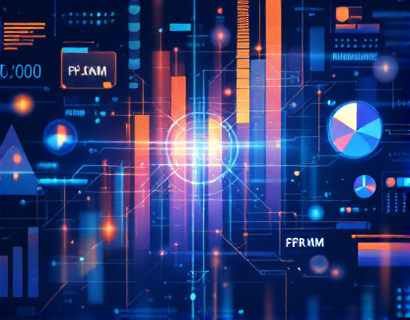Crypto and AI: Powering the Future of Digital Engagement in the Tech Ecosystem
The integration of blockchain technology and artificial intelligence (AI) is ushering in a new era of digital engagement, transforming the way users interact with technology and opening up unprecedented opportunities for growth and innovation. This article delves into the synergy between these advanced technologies, exploring how they are reshaping user experiences and driving expansion in the tech ecosystem. By understanding the intersection of crypto and AI, tech enthusiasts and early adopters can gain valuable insights into the future of digital interactions.
The tech landscape is rapidly evolving, with blockchain and AI emerging as two of the most influential forces. Blockchain, known for its role in cryptocurrencies, offers a decentralized and secure way to conduct transactions and manage data. AI, on the other hand, is revolutionizing the way machines process and interpret information, enabling more intelligent and personalized user experiences. When combined, these technologies create a powerful toolkit for enhancing digital engagement and fostering innovation.
Enhancing User Authentication and Security
One of the primary areas where blockchain and AI are making a significant impact is in user authentication and security. Traditional methods of user verification, such as passwords and two-factor authentication, are increasingly vulnerable to breaches and hacking attempts. Blockchain technology provides a robust solution by offering decentralized identity management systems. These systems use cryptographic techniques to create unique digital identities that are secure and tamper-proof.
AI complements blockchain by enhancing the security protocols through advanced threat detection and response mechanisms. Machine learning algorithms can analyze patterns and detect anomalies in real-time, identifying potential security threats before they become problematic. This combination not only strengthens user authentication but also builds trust and confidence in digital platforms.
For instance, a decentralized identity system powered by blockchain can store user credentials in a secure and private manner. AI algorithms can then monitor access patterns and behavior, flagging any suspicious activity and automatically triggering security measures. This dual approach ensures that user data remains protected while providing a seamless and secure experience.
Personalized User Experiences through AI-Driven Insights
AI's ability to process and analyze vast amounts of data makes it an invaluable tool for creating personalized user experiences. By leveraging machine learning and natural language processing, AI can understand user preferences, behaviors, and needs, allowing for tailored content and recommendations. This level of personalization is crucial in today's digital landscape, where users expect customized interactions that resonate with their individual interests.
In the context of blockchain, AI can analyze transaction data and user interactions on decentralized platforms to provide insights that drive better engagement strategies. For example, a decentralized marketplace can use AI to analyze user purchase history and browsing behavior to suggest products or services that align with their interests. This not only enhances the user experience but also increases the likelihood of repeat interactions and higher user retention rates.
Moreover, AI can help in content curation, ensuring that users are presented with relevant and high-quality information. By filtering through vast amounts of data, AI algorithms can identify trending topics and emerging trends, allowing platforms to stay ahead of the curve and maintain user interest. This synergy between blockchain and AI ensures that users receive a tailored and engaging experience, fostering deeper connections with digital services.
Optimizing Content Delivery and Distribution
Content delivery and distribution are critical components of digital engagement, and blockchain and AI are revolutionizing these processes. Blockchain's decentralized nature allows for a more efficient and transparent distribution of content, reducing the reliance on centralized servers and intermediaries. This not only improves speed and reliability but also enhances security by eliminating single points of failure.
AI plays a pivotal role in optimizing content delivery by analyzing network conditions, user behavior, and content popularity. Machine learning algorithms can predict the most efficient routes for content distribution, ensuring that users receive content quickly and without interruptions. Additionally, AI can dynamically adjust the quality and format of content based on user devices and network capabilities, providing an optimal viewing experience across various platforms.
For example, a decentralized content platform can use blockchain to manage content rights and royalties, ensuring fair compensation for creators. AI can then analyze user interactions with the content, such as views, shares, and comments, to identify the most engaging pieces. This data-driven approach allows the platform to prioritize and promote high-quality content, keeping users engaged and coming back for more.
Fostering Decentralized Communities and Incentivization
Decentralized communities are at the heart of the blockchain ecosystem, and AI is enhancing these communities by fostering greater interaction and incentivizing participation. Blockchain-based platforms can create tokenized economies where users earn tokens for contributing value, such as creating content, providing feedback, or participating in governance decisions. These tokens can then be used within the ecosystem or traded on decentralized exchanges.
AI enhances this model by analyzing user behavior and preferences to design effective incentivization strategies. Machine learning algorithms can identify the most motivating factors for different user segments, tailoring rewards and incentives to maximize engagement. For instance, some users might be motivated by financial rewards, while others might be more interested in recognition or access to exclusive content.
Moreover, AI can facilitate community management by automating moderation tasks and identifying potential issues before they escalate. Natural language processing can analyze user comments and messages to detect harmful or spam content, ensuring that the community remains a positive and inclusive space. This combination of blockchain and AI creates a self-sustaining ecosystem where users are actively involved and incentivized to contribute.
Predictive Analytics and Decision Making
Predictive analytics powered by AI is another area where the integration of blockchain and AI is making a significant impact. By analyzing historical data and real-time insights, AI can predict user behavior, market trends, and potential challenges. This foresight enables platforms to make informed decisions, optimize operations, and stay ahead of the competition.
In the context of blockchain, predictive analytics can be used to forecast network usage, transaction volumes, and user adoption rates. This information is crucial for scaling infrastructure, managing resources, and ensuring a smooth user experience. For example, a decentralized finance (DeFi) platform can use AI to predict peak usage times and allocate computational resources accordingly, preventing slowdowns and ensuring transaction integrity.
Additionally, AI-driven predictive models can help in identifying emerging trends and opportunities in the crypto market. By analyzing data from various sources, including social media, news outlets, and market reports, AI can provide insights that inform investment decisions and strategic planning. This data-driven approach enhances the overall efficiency and effectiveness of digital platforms, driving growth and innovation.
Challenges and Considerations
While the integration of blockchain and AI offers numerous benefits, it also presents several challenges that need to be addressed. One of the primary concerns is the complexity of implementing these technologies, which requires specialized knowledge and expertise. Developers and organizations must invest in training and hiring professionals who can navigate the intricacies of both blockchain and AI.
Another challenge is the regulatory landscape, which is still evolving in many regions. The use of blockchain and AI in digital engagement must comply with local laws and regulations, which can vary significantly. Ensuring compliance while leveraging the full potential of these technologies requires careful planning and legal expertise.
Privacy is also a critical consideration. While blockchain and AI can enhance security and personalization, they also raise concerns about data privacy and user consent. It is essential to implement robust privacy measures and transparent data handling practices to build and maintain user trust.
Conclusion
The convergence of blockchain and AI is transforming the tech ecosystem, offering unprecedented opportunities for enhancing digital engagement and user experiences. By leveraging the strengths of both technologies, platforms can create secure, personalized, and efficient interactions that drive growth and innovation. As the landscape continues to evolve, tech enthusiasts and early adopters have the chance to be at the forefront of this revolution, exploring and harnessing the full potential of crypto and AI.










































